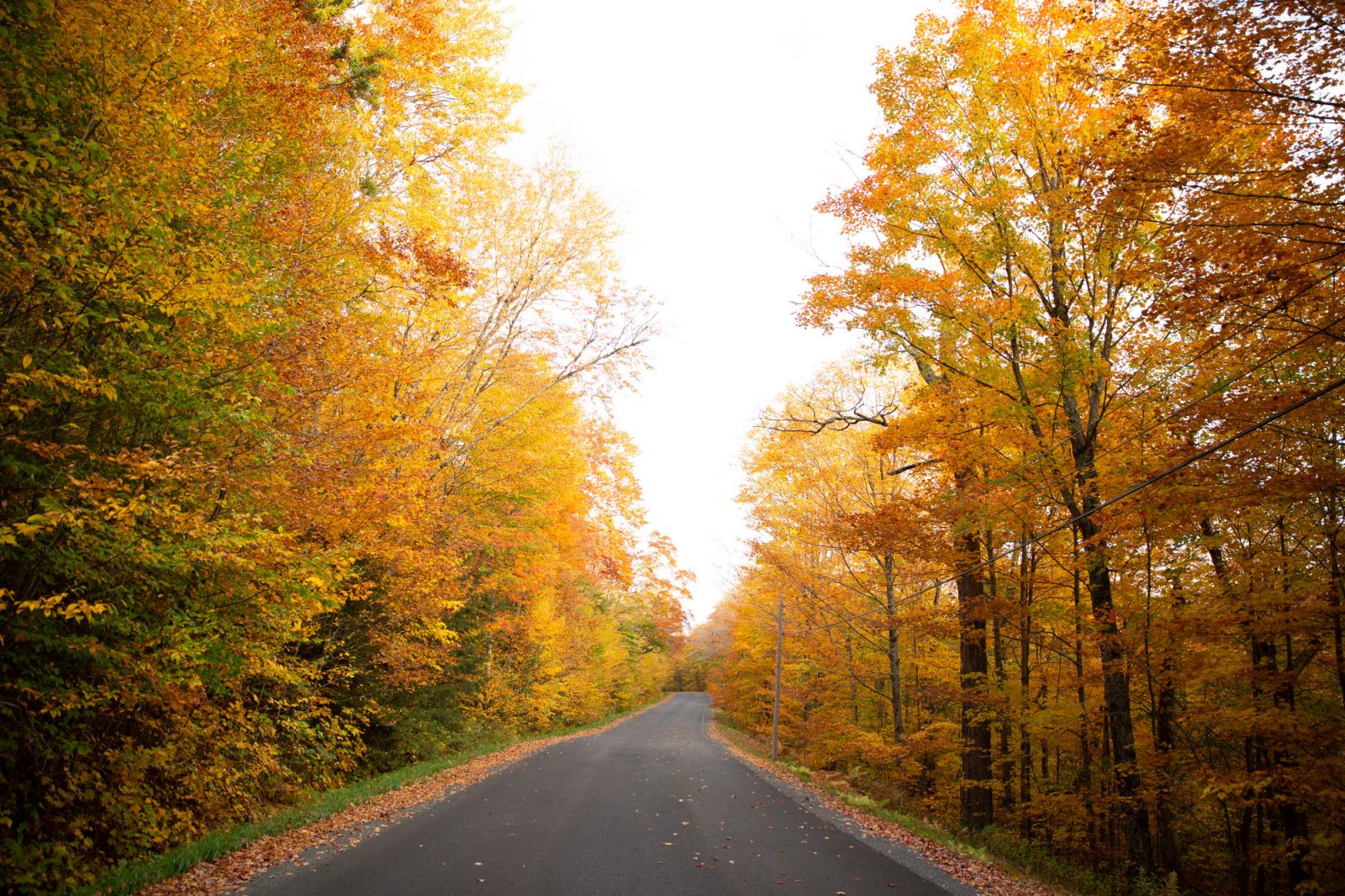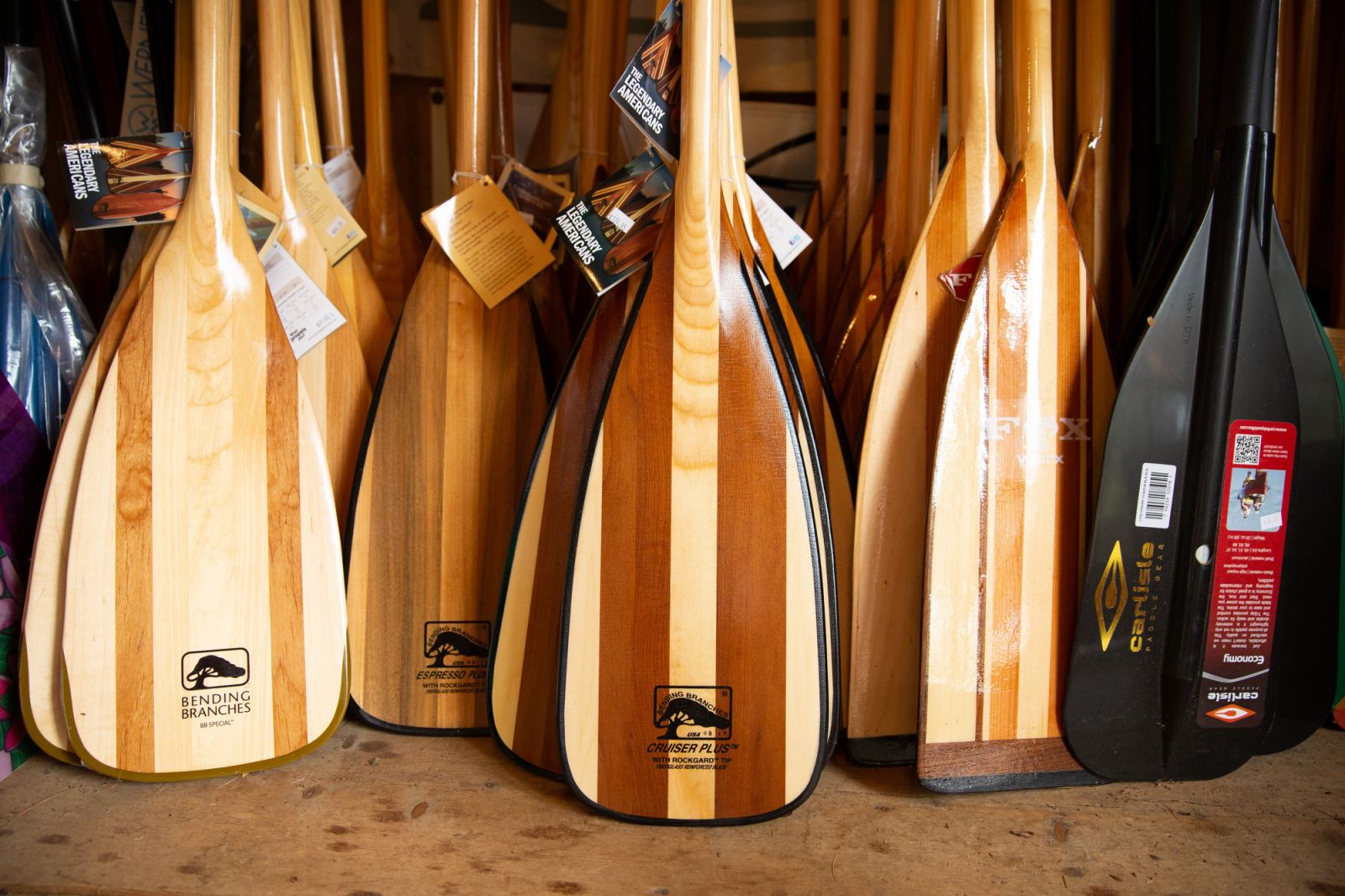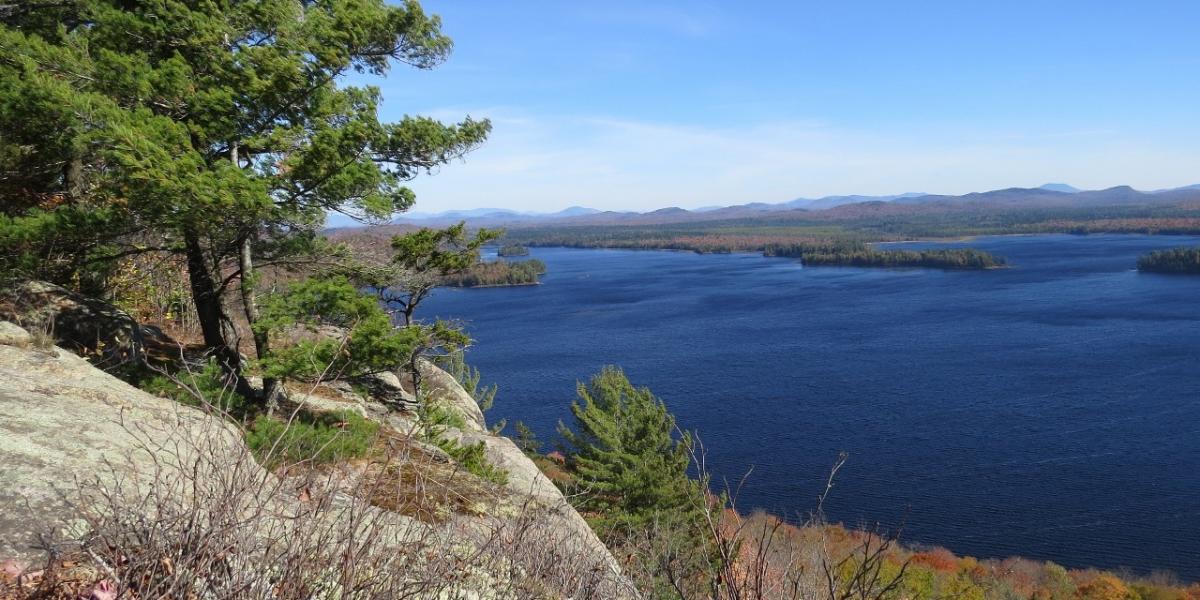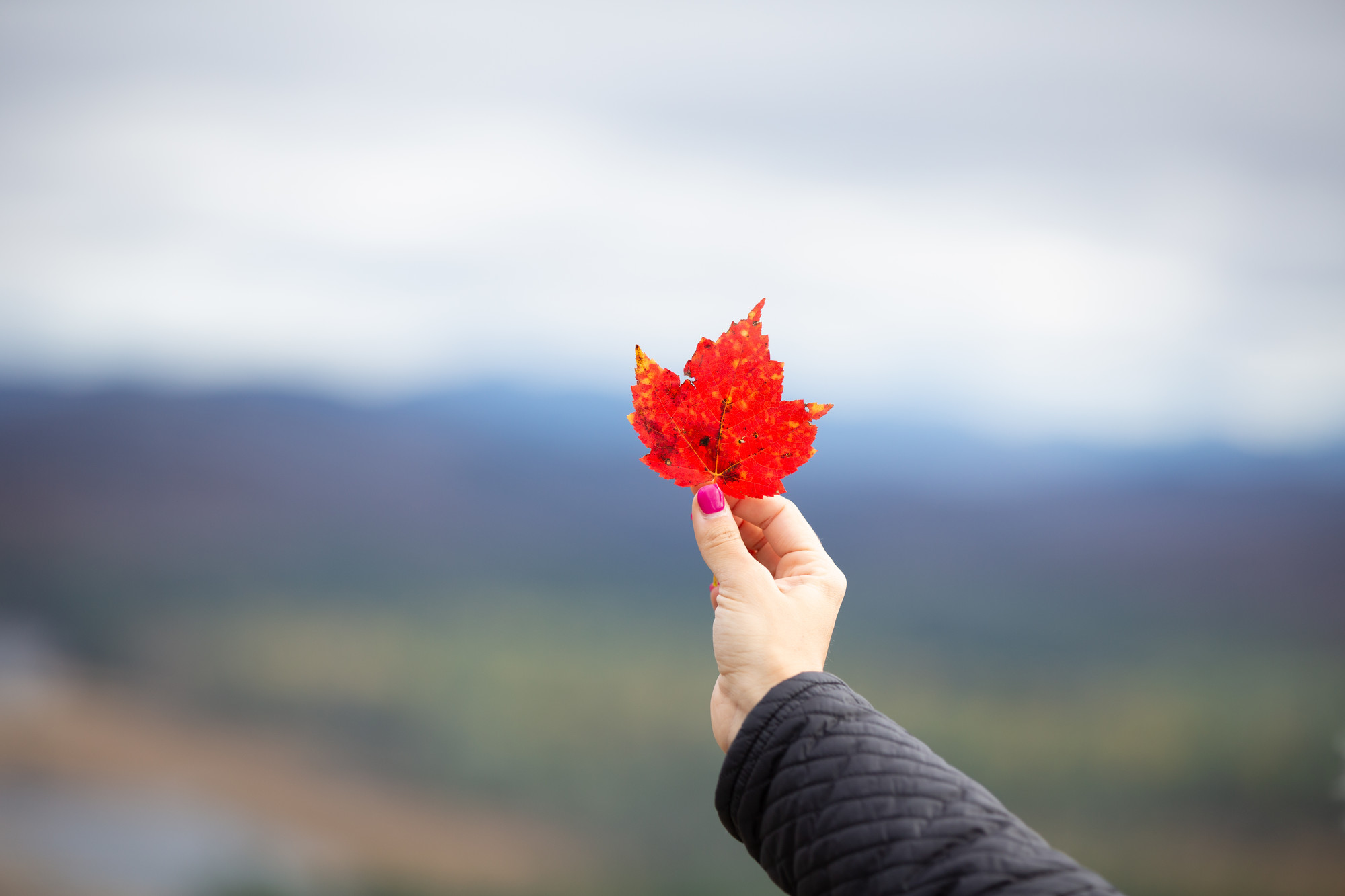
“I cannot endure to waste anything so precious as autumnal sunshine by staying in the house."
-Nathaniel Hawthorne, 1842
You might think that summer is the best season to get outside and do something. Sometimes I even think so too. But as temperatures start to cool, kids go back to school, and pumpkins start to appear at farm stands, I find myself with a serious case of fall fever. I want to get outside to look for changing trees and walk through vibrant forests. I daydream about golden leaves and fall sunshine, and in case you do too, here are a few ways to enjoy fall foliage. Conveniently, they are all in one unique spot.
Let's roll
The William Whitney Wilderness Area is, in my opinion, one of the prettiest areas in the whole region. Plus, it's nice, quiet, and offers several spots to enjoy a scenic drive. About 11 miles south of Tupper Lake's Main Street, the Sabattis Circle Road turn-off from Route 30 leads visitors to Little Tupper Lake, Lake Lila, and Bear Pond, plus thousands of acres of wilderness to explore.
The drive down Route 30 is pretty in its own right, winding gently south and over gentle rises with views abounding. I once saw a very regal-looking coyote on this road, surveying the landscape, possibly for lunch. Once you turn onto Sabattis Road, you'll find yourself on a whole new level of scenic ride, driving under blazingly-hued leaves as the trees arch over the road. The foliage around the road periodically opens up to give a view of a pond or stream. Listen for birds, from small to large, including Eastern Bluebird, Great Blue Heron, and Osprey.
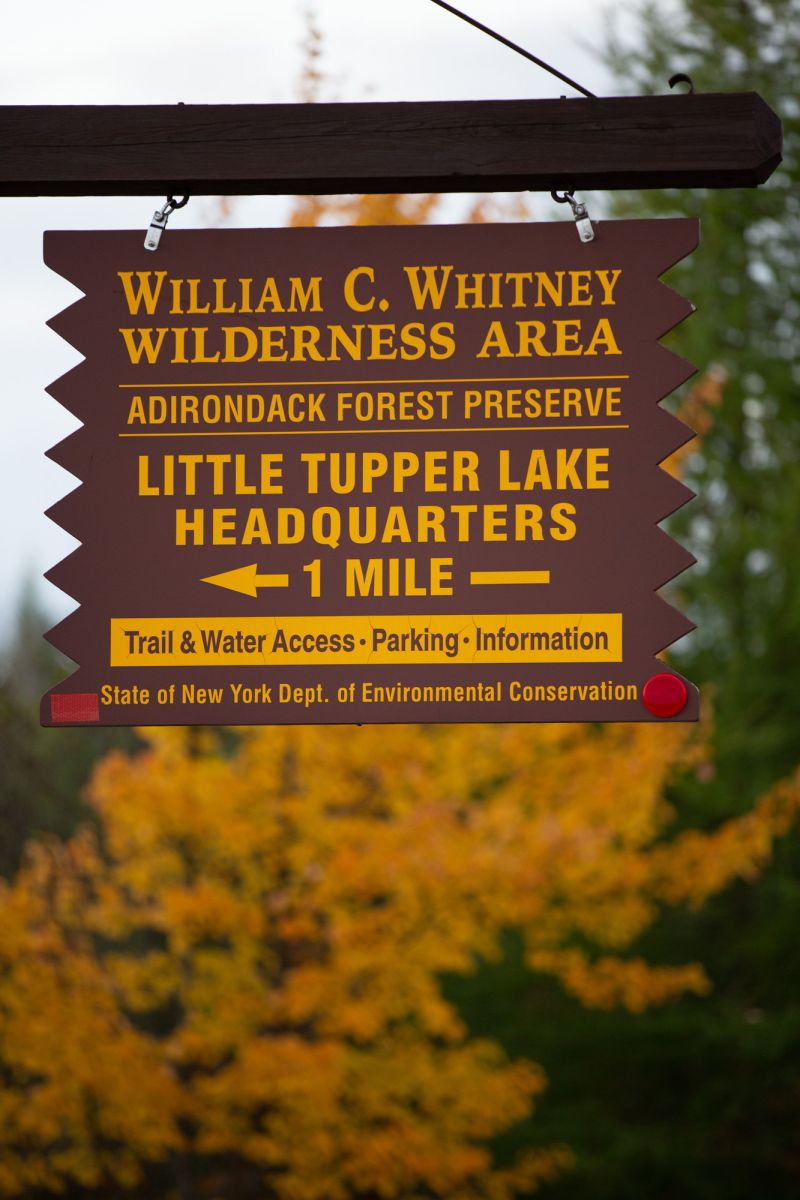
Three miles from the turn off Route 30, you'll find yourself facing Little Tupper Lake, one of the best-kept secrets in the region. The road actually hugs the shore and the tree-lined space is enchanting; this is prime picnic land. I don't think there is another spot quite like it in all of the Adirondacks. Many years ago, this was the site of a hotel, but now the lake is part of the Whitney Wilderness Area and is a wonderful spot for paddling, hiking, birding, and that aforementioned picnic.
You could stop and spend the rest of the day here, but you can also keep driving and delve a little deeper into the wilderness. Circle Road continues another eight miles, to the historic hamlet of Sabattis. There's not much there now, but the drive through the dense woods, with glimpses of scenic ponds and streams, is undeniably pretty. The railroad tracks in Sabattis — once a branch line that served private camps and also provided access to Long Lake — are a good spot to turn around. In the early 1900s, visitors to the area might have disembarked from the station here, then taken a horse-drawn carriage or wagon the many miles to camps and hotels. It sounds romantic, but I for one am happy to have a car.
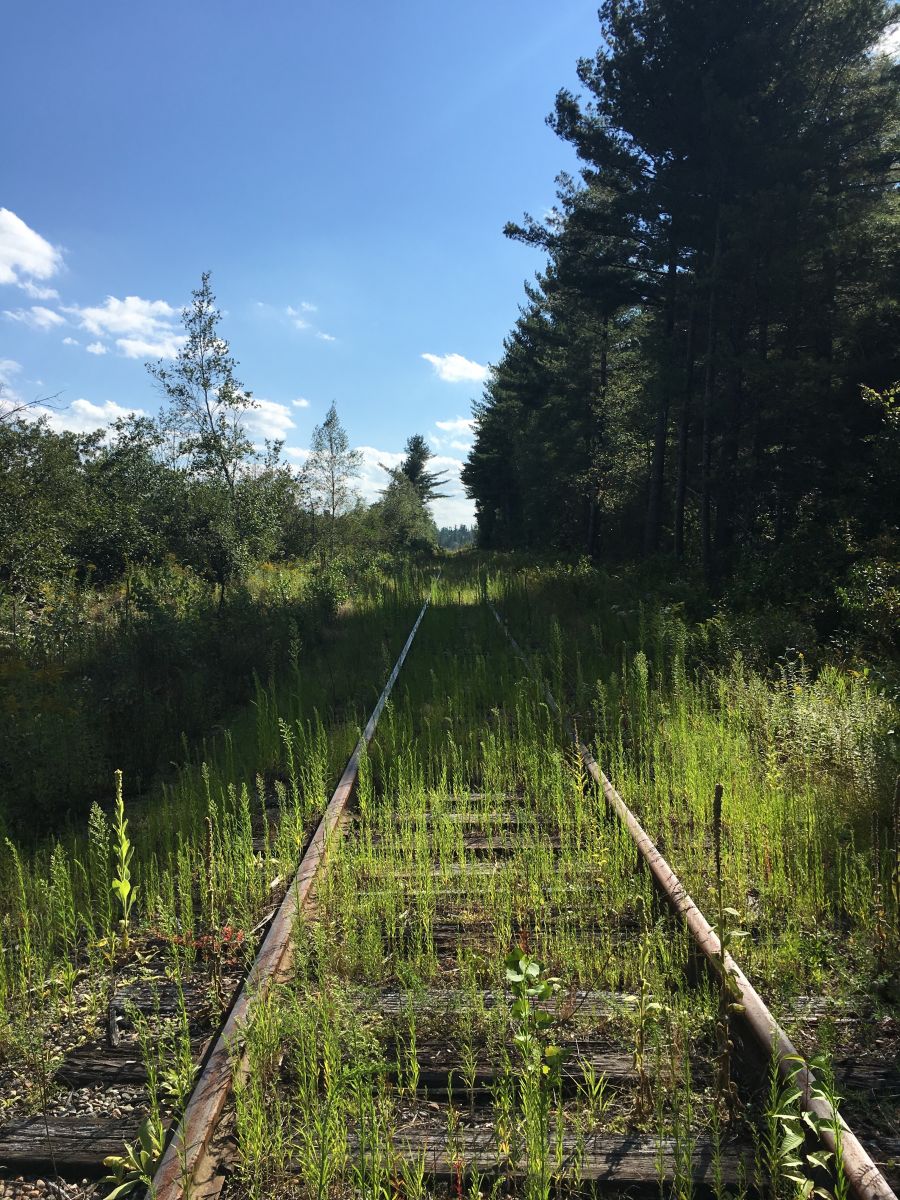
Grab your paddles
For paddlers, the Whitney Wilderness Area has not one but five beautiful places to get out on the water: Little Tupper Lake, Lake Lila, Rock Pond, and Bear Pond. You can also paddle on Round Lake, which flows into Little Tupper Lake. Don't be intimidated by fall's cool air when paddling; simply dress in layers with some extra warmth and you'll be fine. One of the best ways to see fall foliage is, in my opinion, from the water. The reflection of many hues of red, orange, and yellow on the water is a delight.
For easy launching and great scenery, paddlers can take to Little Tupper Lake, which at more than 2,000 acres, provides plenty of views and nooks and crannies to explore. Just be wary of the wind, which can make the lake rough. From Little Tupper Lake, paddlers may also explore Rock Pond via the Rock Pond Outlet and a short carry.
I'd be completely remiss if I didn't tell you about Lake Lila, a spot that can be a little tricky to access but is beautiful in its remoteness. The lake, once privately owned and the site of the great camp Nehasane, the Adirondack retreat of railroad magnate William Seward Webb. Access to the lake is via Lake Lila Road, a six mile rough dirt and gravel road off Sabattis Circle Road. Vehicles with high clearance are recommended for this road. Once at the parking area, there is a carry of 0.3 miles. From there, it's all scenic bliss, with Mount Frederica on the western shore and several islands dotting the lake's surface.
Lace up those boots
Last but not least, the Whitney Wilderness Area provides some great hiking. At Lake Lila, the trail up 2,170 foot Mount Frederica — named for William Seward Webb's daughter — may be accessed by paddling to the trailhead, or hiking a private access road. This mountain, and indeed, the entire lake, used to be private property, but the Webb family donated it to the state, making it possible for everyone to enjoy.
From Little Tupper Lake, several trails lead along the shore of the lake and beyond into the wilderness to remote ponds. Many of the trails are former logging roads, making them appealing for walkers of many ages and abilities. Go all the way — the longest trail here, Lilypad Pond Trail, is 8.2 miles one way — or simply a short distance. Either way, you'll enjoy the scent of pine trees and the vibrant colors of changing leaves. Thanks to the trail connections, you can choose your own adventure and make your hike a unique one.
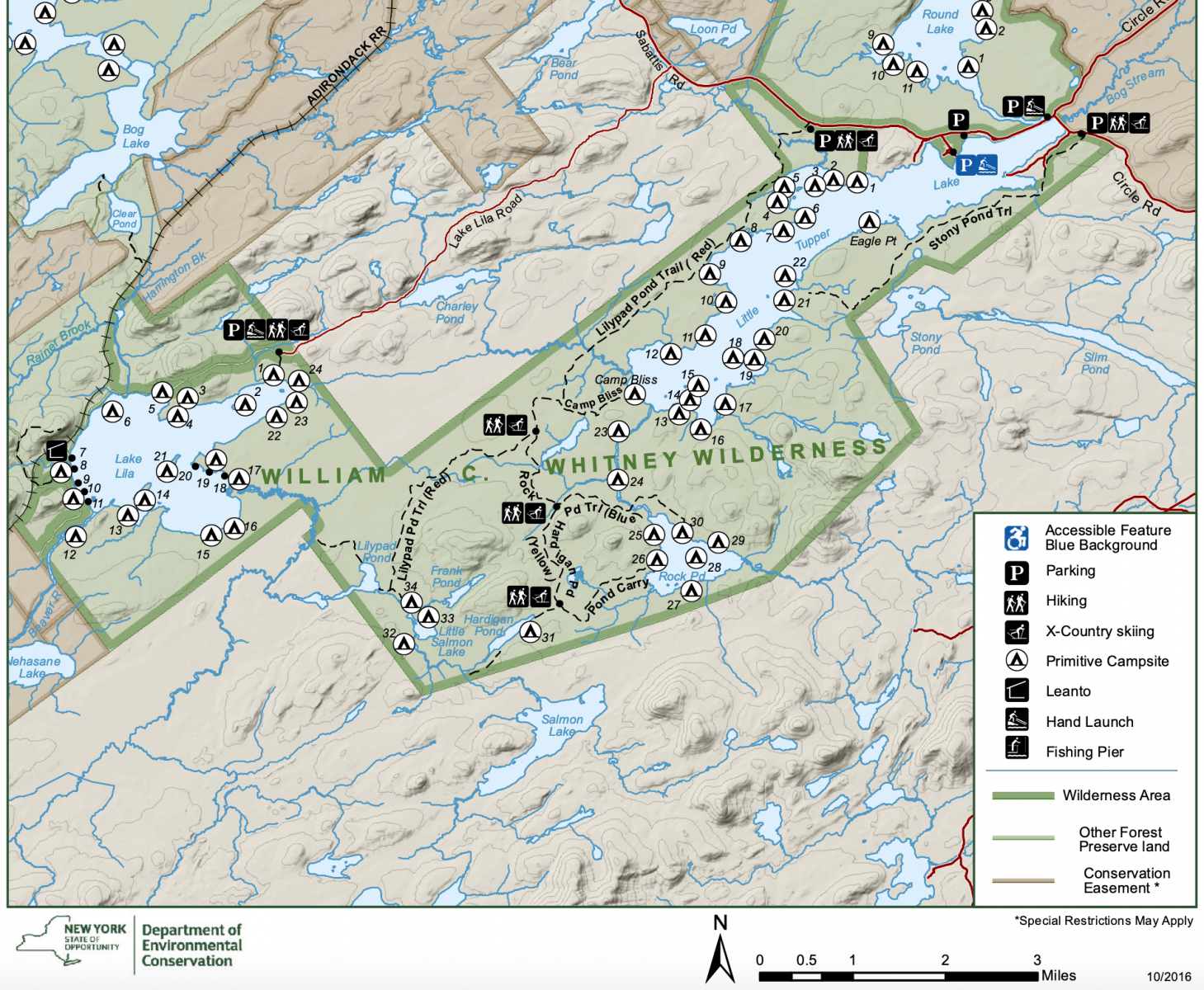
There are more than 70 designated backcountry camping sites in the area, most of them accessible by canoe or kayak only, some only on foot. There is also a lean-to on the west shore of Lake Lila, near the trail up Mount Frederica. Fall colors, a cozy sleeping bag, and waking up with the birds: What could be better?
Whether you're on foot, in the car, or on the water, the William C. Whitney Wilderness Area is an ideal spot to enjoy the peacefulness of nature surrounded by the colors of fall. Watch for wildlife, including the iconic loon and moose. In nearby Tupper Lake, find good eats, shopping and a place to rest your head. Your special fall vacation in the wilderness awaits.
This week in ADK news:

